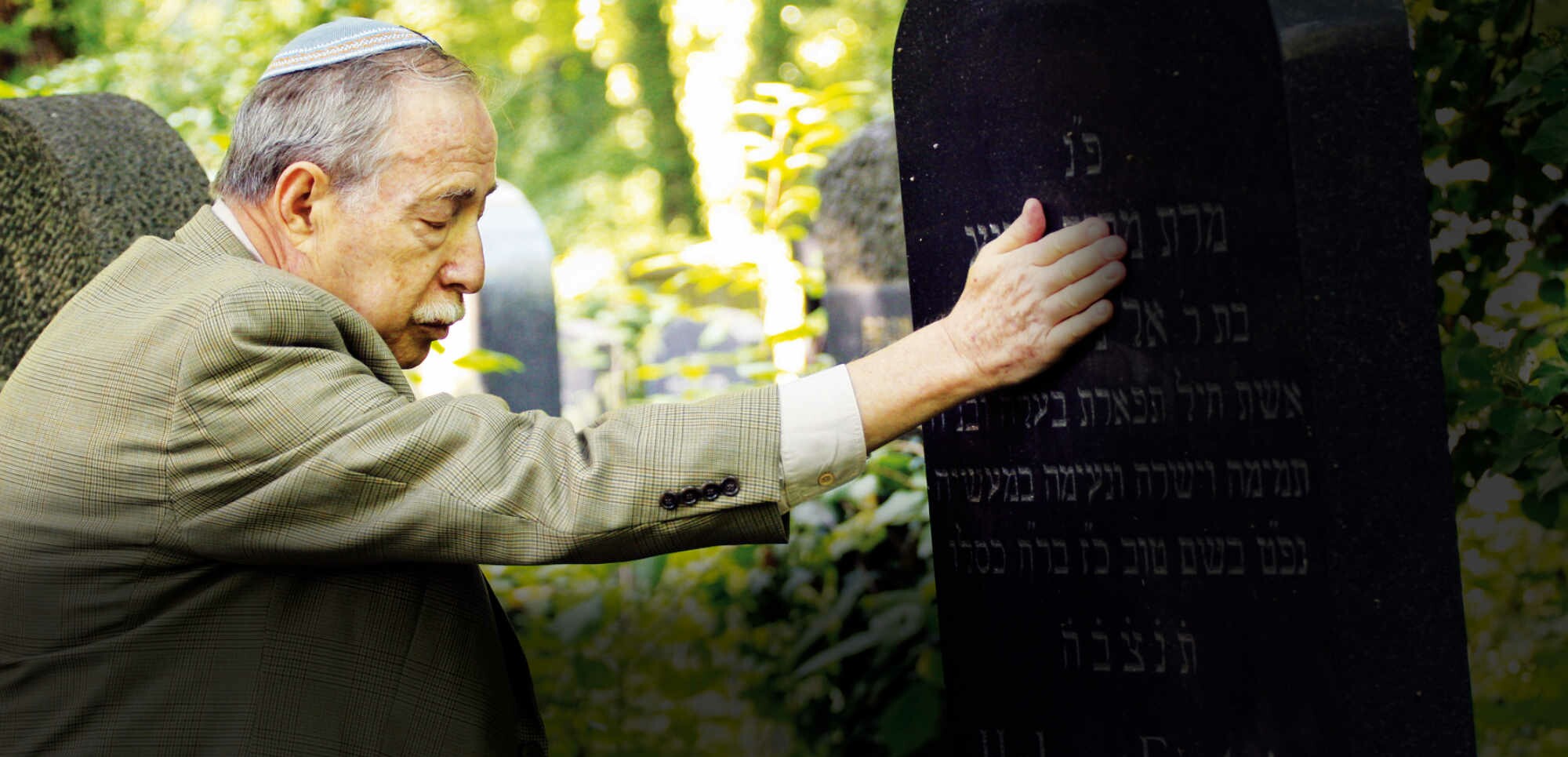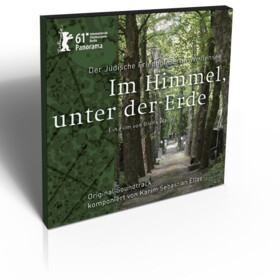It was the third cemetery to be constructed by the Jewish Community in Berlin. At almost 130 years old, it is the biggest Jewish cemetery in Europe still in use and could quite comfortably hold about 86 football fields. Walking through the cemetery grounds is like strolling through a history book. The list of famous artists, philosophers, barristers, architects, doctors, religious instructors and publishers buried there, is lengthy. The founders of two renowned German department stores, Jandorf (KaDeWe) and Hermann Tietz (Hertie), are amongst other names such as the painter Lesser Ury, the hotelier Kempinski, the publisher Samuel Fischer (S.Fischer Publishers) and Rudolf Mosse, to whom Europe’s once biggest publishing house belonged.
The first to be buried was in fact not a celebrity, but Louis Grünbaum, a nursing home resident, on September 22nd 1880. A large “1” is engraved on the side of his gravestone. The fact that his gravestone remains erected is symbolic of the tradition that Jewish cemeteries are built for eternity. The graves are not levelled and there is no time limit for the burial. All graves in Weissensee are numbered consecutively; the most recent grave numbers are six-figured.
More than 115,000 people are buried in the Weissensee Cemetery. Simple gravestones lie embedded between splendid mausoleums from the Art Nouveau or Art Deco styles. A few gravestones were designed by architects Mies van der Rohe and Walter Gropius. Some engravings seem quirky, many are touching, others are impressive by their sheer monumentality. However wide the budget disparity between the graves must once have been, the state of the graves today couldn’t be more equal - crumbled, overgrown, forgotten. Hardly a sliver of summer light seeps through the dense treetops onto the graves. Some pathways are so overgrown, they seem to have been devoid of grave-visitors for years.
There are few relatives left who can care for the graves. The Holocaust not only obliterated the lives of millions, it also robbed them of their memorial. In the 1930s there were around 170,000 Jews living in Berlin; after the war only round 1,500 remained.
Most intriguingly: Weissensee was never closed. The cemetery belonged to the handful of Jewish institutions in Germany which, even during the Nazi era, remained self-managed by Jews. Jewish children would play in Weissensee when the German streets became too dangerous for them. There they would feast on plums and apricots from wild fruit trees. Some Jews spent a night or two hidden in freshly dug graves or in the capital of a gravestone, concealed from their pursuers. Between 1933 and 1945, in the time of Rabbi Riesenberger, burials were still carried out regularly - all to Jewish custom, except for one detail: that Riesenberger and his remaining staff were the only ones permitted to carry the coffin to the grave.
The story of the Jews of Berlin is written on the graves. Some stones, where the deaths of both parents and their children are marked with the same date, whisper of suicide. On other graves, empty space was reserved for the names of people who could never be buried there. Sometimes more of the story is revealed by the occasional family grave, offering the words “In Memory of…”
Set in the outskirts of the the capital city of the GDR, the cemetery sank further and further into oblivion after the war. The small East-Berlin community couldn’t keep up with the ever-growing forest in Weissensee. In their despair, the cemetery management decided to hand over the biggest part of the cemetery to nature, in order to save energy and resources for at least a few token lots at the entrance, where burials would still take place. Since the German Unification the cemetery staff have been trying, one by one, to reclaim the lots.
Today, the Jewish Community in Berlin, with over 12,000 members, is the biggest Jewish community in Germany. According to the American Jewish Community, it is also currently the fastest-growing Jewish community in the world. This is due to the immigration of Russian Jews in the last few years. Currently 80% of the community members are Jews who emigrated from the former Soviet Republics. The customs and traditions of the families, brought with them from their old home, create the youngest and most intriguing chapter of Weissensee.
What is buried in the cemetery is not just Jewish History, but also in its essence the history of Berlin and Germany altogether, a story which is by no means complete.




























